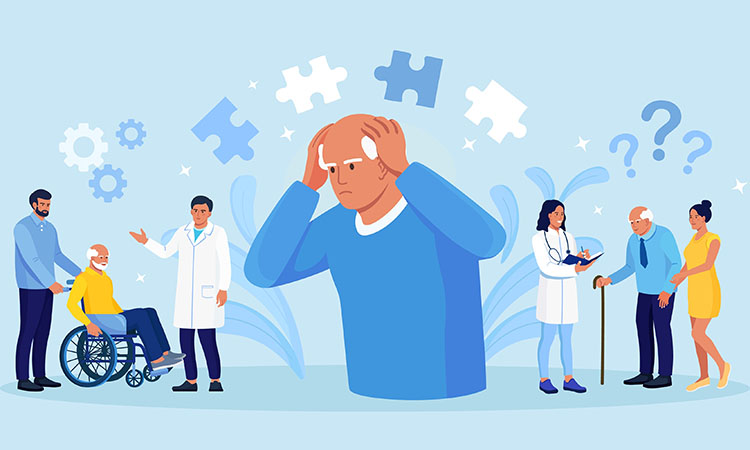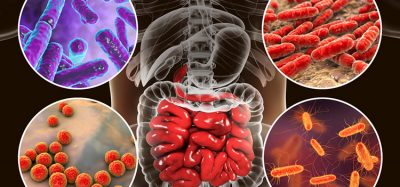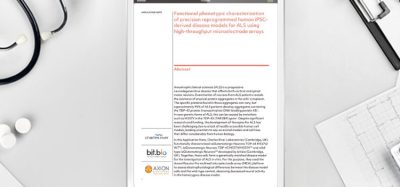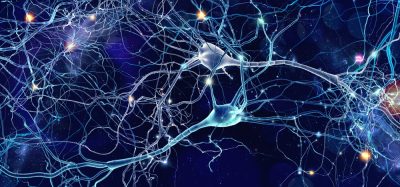Alzheimer’s study shows improved memory and mood with enhanced neurons
Posted: 18 April 2023 | Ria Kakkad (Drug Target Review) | No comments yet
Using rodent models, the researchers emphasized the potential of newly generated neurons in adulthood to serve as therapy for addressing the functional deficits and pathology associated with Alzheimer’s disease.

In adult human brains, the hippocampus generates new neurons (adult-born neurons, or ABNs) throughout life, helping to maintain memories and regulate emotions. Scientists call this process “adult hippocampus neurogenesis (AHN).” In people with Alzheimer’s disease, this process is impaired, leading to reduced production of ABNs with poorer qualities. Given that Alzheimer’s patients often develop both cognitive symptoms (such as memory loss) and non-cognitive symptoms (such as anxiety and depression) for which AHN plays a critical role, one way to help Alzheimer’s patients achieve symptom relief could be to restore AHN.
Published in the journal Cell Stem Cell, scientists from University in Chapel Hill School of Medicine, US, demonstrated that stimulating a brain region called Supramammilary nucleus (SuM) located in the hypothalamus effectively enhanced adult-born neurons in the otherwise impaired Alzheimer’s brains of mice. After patterned stimulation of SuM, Alzheimer’s brains developed more ABNs with improved qualities. Importantly, activation of these SuM-modified ABNs restored both cognitive and affective deficits in Alzheimer’s mouse models.
“It has been a longstanding question whether AHN can be sufficiently enhanced in impaired Alzheimer’s brains to improve brain function,” said senior author Dr Juan Song. “An important point to consider when addressing these questions is the low-level hippocampal neurogenesis, which becomes even lower in Alzheimer’s patients.
By manipulating a small number of ABNs in the Alzheimer’s brain, we demonstrate that ABNs can be enhanced even in the presence of Alzheimer’s pathology, and these enhanced ABNs are important for the restoration of behaviours and hippocampal function.”
To enhance ABNs in Alzheimer’s brains, Song and colleagues adopted an elegant two-step ABN-enhancing strategy by first stimulating SuM using a patterned optogenetic paradigm with the goal of promoting the generation and developmental properties of ABNs, followed by stimulating the activity of SuM-enhanced ABNs using chemogenetics.
Optogenetics involves the use of light to alter the activity of brain cells expressing light-sensitive opsin genes. Chemogenetics involves the use of inert molecules to alter the activity of brain cells expressing designer’s receptors.
“Interestingly, SuM stimulation alone or activation of ABNs without SuM stimulation failed to restore behavioural deficits in Alzheimer’s mice.” Song said. “These results suggest that multi-level enhancement of ABNs — namely increasing their number, improving their developmental properties, and enhancing their activity — is required to achieve their therapeutic benefits in Alzheimer’s brains.”
When Song and colleagues further analysed the protein changes in the hippocampus of Alzheimer’s mice in response to activation of SuM-enhanced ABNs, the researchers found that several well-known protein pathways were activated inside cells. These pathways include the ones important for synaptic plasticity of neuronal cells that allow enhanced communication among them, as well as the ones important for phagocytosis of non-neuronal microglia that allow efficient plaque clearance.
“It is striking that multi-level enhancement of ABNs through combined SuM and ABN stimulations allows such a small number of ABNs make profound functional contribution in diseased Alzheimer’s brains,” Song said. “We are eager to find out the mechanisms underlying these beneficial effects mediated by activation of SuM-enhanced ABNs on Alzheimer’s pathology and hippocampal function. Future efforts will be needed to develop drugs that mimic these beneficial effects mediated by activation of SuM-enhanced ABNs. Ultimately, the hope is to develop first-in-class, highly targeted therapies to treat Alzheimer’s and related dementia.”
Related topics
Disease Research, Neurons, Neurosciences
Related conditions
Alzheimer’s disease
Related organisations
University in Chapel Hill School of Medicine
Related people
Dr Juan Song







